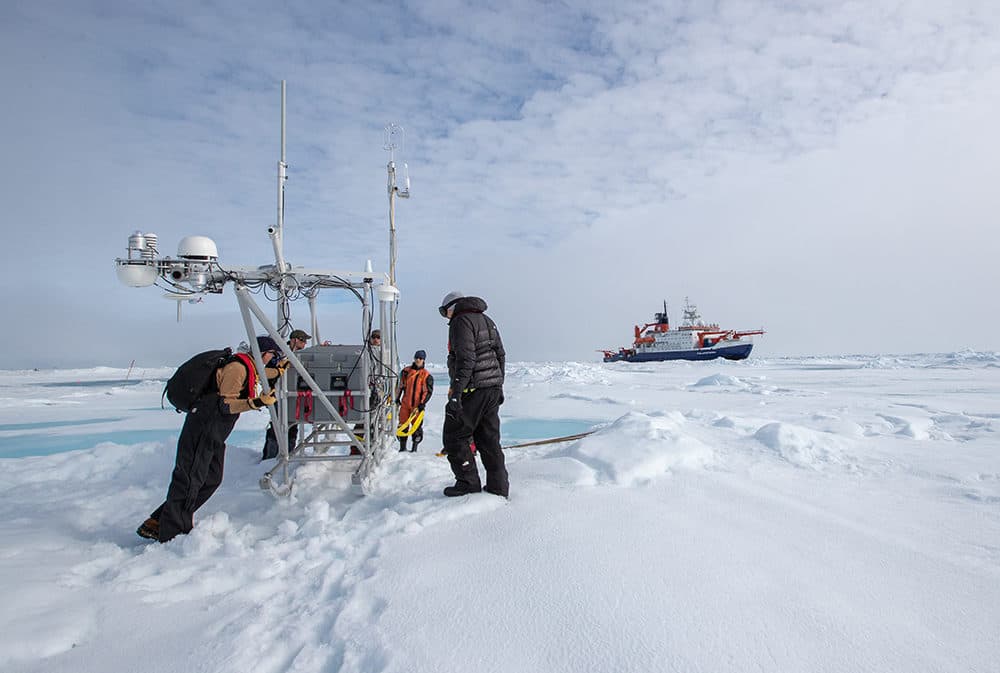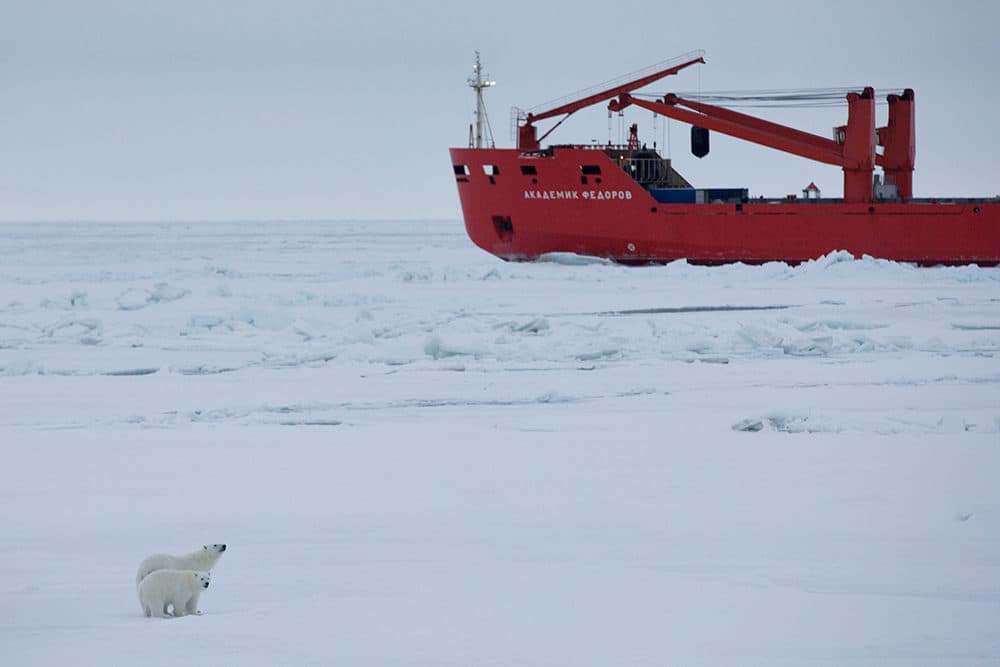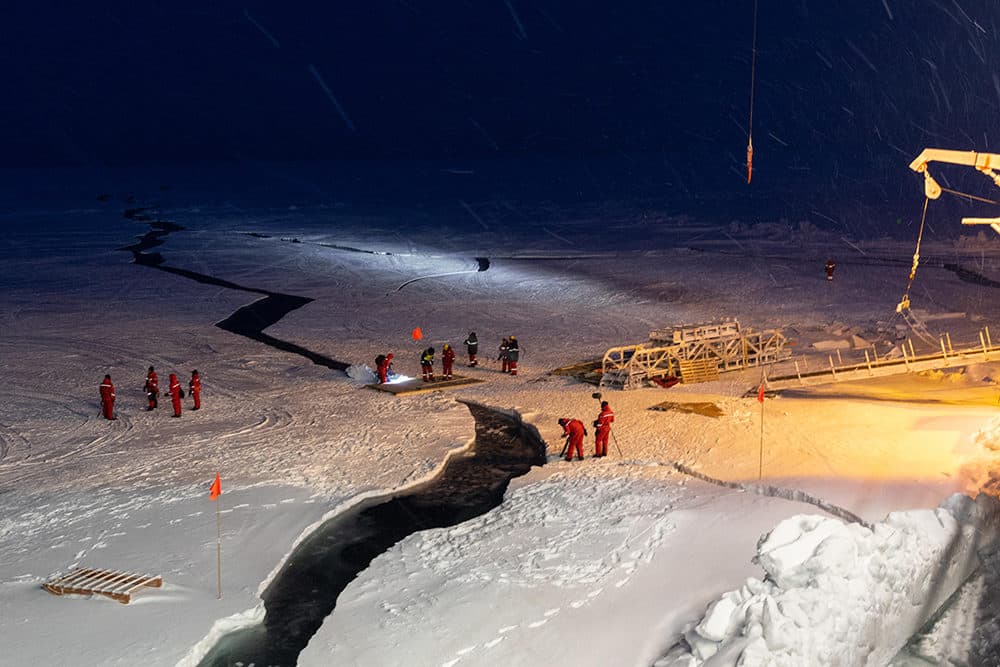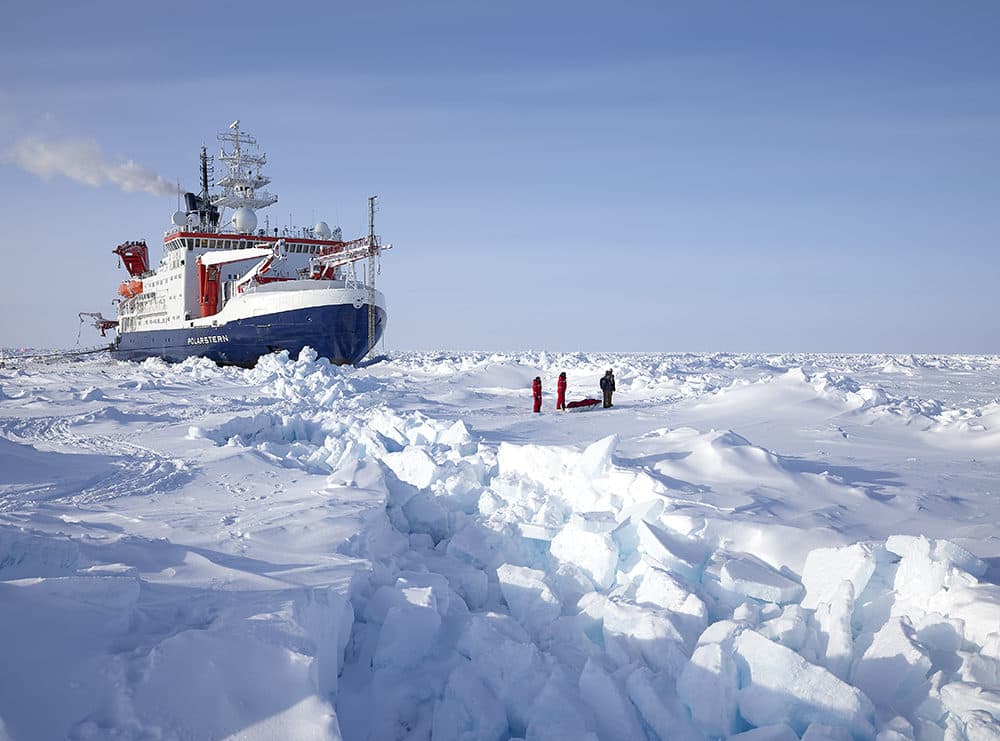Advertisement
Researchers Wrap Up Largest Polar Expedition In History To Better Understand Climate Change
Resume
A group of researchers from 20 countries is about to conclude what they're calling the largest polar expedition in history.
The icebreaker Polarstern set out from Norway in September of last year and is due back in port in Germany later in October. Over the past year, scientists onboard have been circling the North Pole, collecting data in the Arctic Ocean to better understand the loss of polar ice and climate change.
The vessel is currently “pretty close to the North Pole” near the Siberian coast, says professor Markus Rex, head of atmospheric physics at the Alfred Wegener Institute and leader of the Arctic expedition MOSAiC — the Multidisciplinary drifting Observatory for the Study of Arctic Climate.

Researchers are able to get so close to the North Pole because of large openings in sea ice above Greenland, Rex says. In the past, vessels had a harder time traveling through the Arctic because the region is usually covered in thick sea ice that has built up over several years.
Now the ice floes are extremely thin — only about 1 or 2 years old.
“That's good for traveling through the ice,” he says, “but it also shows how dramatic climate change already is here up in the high north.”
This is the first time a research icebreaker has spent a full year at the North Pole, including during the Arctic winter, Rex says. Scientists wanted to obtain more accurate climate models over the entire year.
It’s also impossible to reach the Arctic in the winter, Rex says, so the vessel went there in the fall and anchored itself to an ice floe.
“The ice in winter, even nowadays, is too thick,” he says. “The only way to get here is to get here in summer or fall. Then let the vessel freeze into the ice, and then we drifted with the natural drift of the ice across the North Pole area.”

Being in the Arctic Ocean during the winter is a “very, very special experience,” Rex says.
“It is just completely black outside. The world shrinks to the little bubble of light you can see from your own flashlight,” he says. “It's more like exploring a different planet really. There aren't any colors. The snow and ice surface is completely white where the light from the flashlight gets, and it's completely pitch black and dark where it doesn't get.”
While some might find it depressing to live under the cover of darkness for a year, Rex says he and many members of the MOSAiC expedition have found the experience “inspiring.”
“I think everybody on board has that enthusiasm to be able to be there, to be able to experience that world which so few people have experienced so far,” he says. “And we have spent so much time as we could out there on the ice — the complete darkness — to just completely take it in.”

When the coronavirus pandemic hit in the spring, it was nearly a “nightmare” for the expedition because there were delays in getting new fuel and supplies due to global lockdowns, Rex says. Six additional vessels had to be called out to support the mission.
Since then, the vessel has been completely insulated from the virus spreading across the globe, he says.
“It's a little corona-free paradise up here in the Arctic,” he says. “We can party together. We don't have any social distancing rules. It's really like a little heaven.”
If everyone could make the trip to the Arctic, Rex says it would change people’s perspective on climate change. Sharing what they’ve seen and experienced is “an integral part” of their mission.
“When I started to travel to the Arctic in the early 1990s, it was a deeply frozen landscape in winter,” he says. “When I get there today, I have open water right at my feet. It's dramatic. It's impressive. I think it shows the urgency of our political measures now to mitigate climate change.”
This story is part of Covering Climate Now, a global journalism collaboration of more than 400 news outlets committed to better coverage of the climate crisis. This Sept. 21-28 collaborative week focuses on the intersection of climate change and politics.
Want to help improve WBUR's climate coverage? Take this short survey to let us know what you like and what you want more of from our reporting.
Chris Bentley produced and edited this interview for broadcast with Todd Mundt. Samantha Raphelson adapted it for the web.
This segment aired on September 25, 2020.

